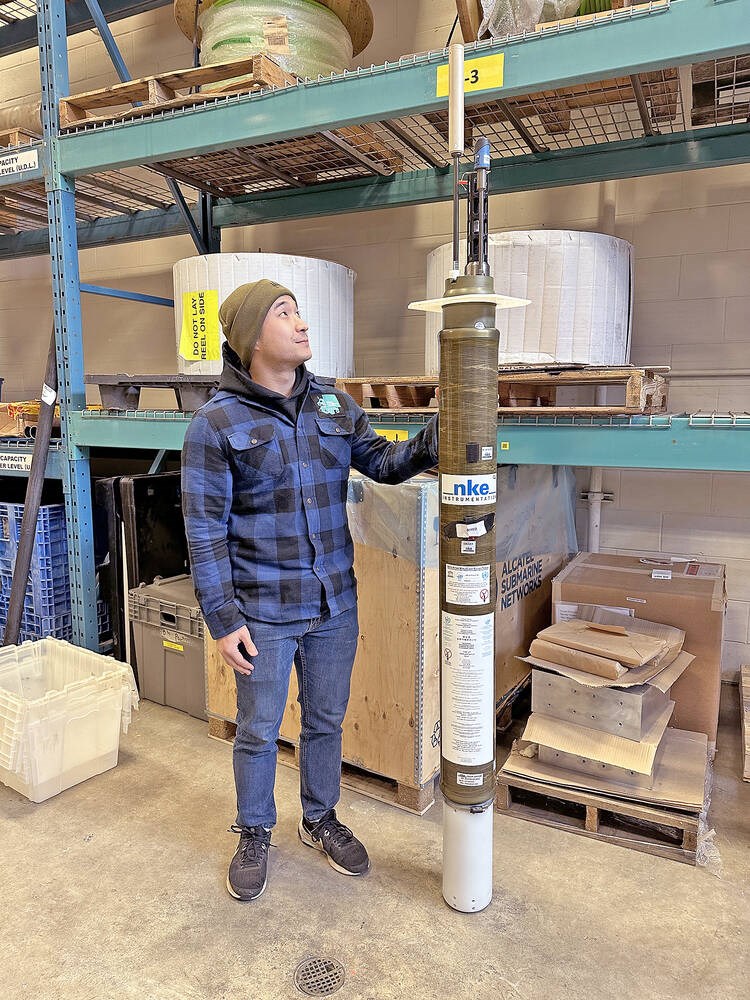So-called “droids of the deep” are the newest stars for Ocean Networks Canada, a University of Victoria-based initiative that operates underwater observatories around the world.
Likened to deep-sea robots, the droids are battery-powered floats that move up and down in the water via a mechanism controlling their buoyancy. Five are being used to collect data in the northeast Pacific Ocean at depths up to four kilometres.
Ocean Networks Canada says the devices bring “a new dimension” to their NEPTUNE observatory — made up of a series of sensors connected by more than 800 kilometres of cable on the sea floor off B.C. ONC also operates systems in the Atlantic and Arctic oceans.
The droids have been deployed over the year during Fisheries and Oceans Canada voyages, and are running at twice the depth that about 3,800 similar instruments currently in use in the world’s oceans can handle.
Data from the devices is helping researchers “assess dynamics in the distribution of low-oxygen waters in this region,” said Ocean Networks Canada senior staff scientist Kohen Bauer.
“The deep waters of the northeast Pacific have been losing oxygen due to climate change, which threatens ecosystem stability.”
Bauer said the devices have been providing measurements of dissolved oxygen “more frequently and over a larger area than previously established.”
Ocean Networks Canada said the deep-sea environment being monitored tends to be very stable, with changes happening only over a long time, so it’s especially vulnerable to faster changes linked to climate change.
Ocean Networks Canada chief executive Kate Moran said the devices will advance understanding of changes in the ocean.
For example, she said they will be used to provide “a wider geographic picture” of an extreme low-oxygen situation previously identified by the NEPTUNE observatory off southern B.C. in 2021.
“With early detection, there is potential for protecting coastal aquaculture industry resources before low-oxygen conditions emerge,” Moran said.
When the devices reach the surface, they connect via satellite to the global Argo data portal to transmit their data, Ocean Networks Canada said.
Argo is an international program that uses such devices to provide information like global heat-storage estimates and projections of sea-level rise.


